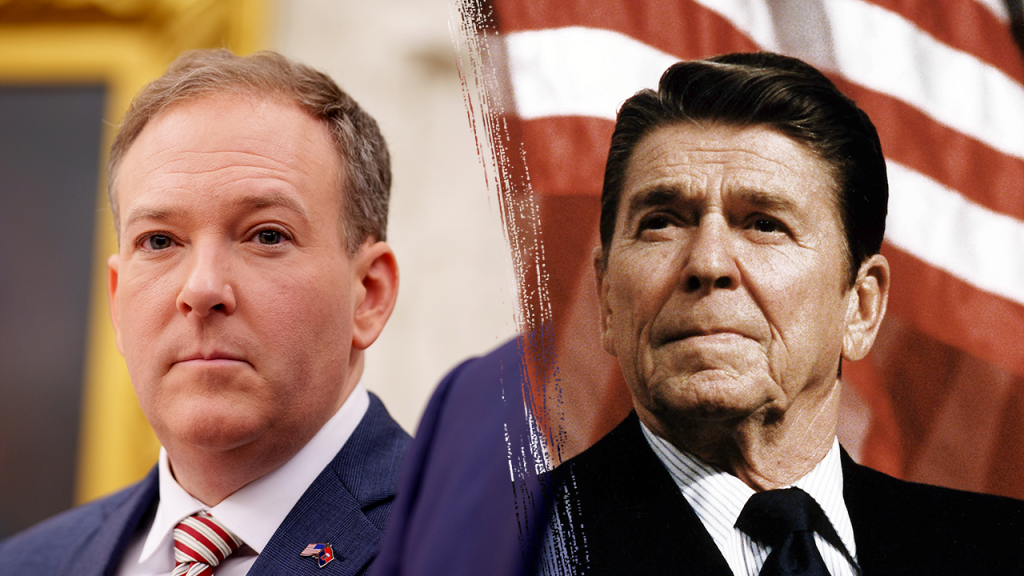The federal Environmental Protection Agency (EPA) is undergoing a significant restructuring aimed at reducing its workforce to Reagan-era levels and saving taxpayers hundreds of millions of dollars annually. EPA Administrator Lee Zeldin announced plans to cut the agency’s staff from approximately 15,000 employees to around 11,400, which mirrors figures from 1984 during President Ronald Reagan’s presidency. This initiative, as outlined by Zeldin, is not just about staffing cuts; it’s also focused on enhancing operational efficiency and scientific rigor within the agency’s mission to protect human health and the environment.
| Article Subheadings |
|---|
| 1) Objectives of the Reorganization |
| 2) Workforce Reduction Plans |
| 3) New Office Initiatives |
| 4) Addressing Backlogs and Efficiency Measures |
| 5) Financial Implications and Taxpayer Impact |
Objectives of the Reorganization
The EPA’s reorganization aims to streamline operations while ensuring effective management of its resources. Under the leadership of Lee Zeldin, the agency is not only looking to cut costs but also to enhance the scientific basis of its regulations. As Zeldin stated in a recent press release, “This reorganization will bring much-needed efficiencies to incorporate science into our rulemakings and sharply focus our work on providing the cleanest air, land, and water for our communities.” The plan is billed as an effort to recommit the agency to what he described as “common sense policies” that prioritize human health and environmental protection.
Workforce Reduction Plans
Current staffing levels at the EPA are significantly higher than they were during the Reagan administration, prompting Zeldin’s commitment to reduce the workforce by approximately 25%. This ambitious target is seen as a means to save taxpayers an estimated $300 million annually by the next fiscal year. Zeldin’s announcement notes that historically, the agency had a workforce of about 11,400 in 1984, which he plans to return to by strategically downsizing current personnel. The implications of this workforce reduction have generated a range of responses from various stakeholders concerned about its potential effects on both environmental safeguarding and employee morale.
New Office Initiatives
To facilitate the new operational strategy, the EPA plans to create several new offices aimed at addressing core responsibilities more efficiently. This includes the introduction of the Office of Applied Science and Environmental Solutions, designed to focus on statutory obligations and mission-critical functions. In addition, an Office of Clean Air programs will be established to emphasize the alignment of regulatory obligations with scientific expertise. Zeldin envisions that these initiatives will promote transparency in regulatory development while allowing for quicker resolution of air, land, and water quality issues.
Addressing Backlogs and Efficiency Measures
One pressing concern within the EPA is the backlog of chemical and pesticide evaluations, which currently stands at over 504 new chemicals awaiting review beyond statutory timeframes. Zeldin highlighted the necessity of staffing these reviews adequately by proposing the addition of more than 130 scientific and technical experts within the Office of Chemical Safety and Pollution Prevention. These measures aim to resolve the existing backlog of over 12,000 reviews—an ongoing concern that undermines the agency’s mission of timely and effective risk assessment.
Financial Implications and Taxpayer Impact
Zeldin’s overhaul plans carry significant financial implications for both the EPA and taxpayers. By re-examining its grants, contracts, travel costs, and overall real estate footprint, the agency anticipates identifying and canceling more than $22 billion in obligations. “We owe it to the American taxpayers to be as efficient as possible,” Zeldin remarked, emphasizing fiscal responsibility. Currently, the EPA is operating under a budget that notably increased from previous years, sitting at $63 billion as compared to $6-$8 billion in earlier budgets, further underscoring the need for a dramatic reassessment of spending.
| No. | Key Points |
|---|---|
| 1 | The EPA is looking to reduce its workforce to Reagan-era levels while saving taxpayer money. |
| 2 | The reorganization is designed to improve scientific rigor in regulatory practices. |
| 3 | New offices will be created to streamline operations and enhance transparency. |
| 4 | The agency plans to address significant backlogs in chemical and pesticide reviews. |
| 5 | A significant reassessment of spending is underway, focusing on taxpayer efficiency. |
Summary
The planned restructuring of the EPA under Administrator Lee Zeldin signifies a pivotal shift in how the agency approaches its mission and manages its resources. By targeting staff reductions and introducing new operational frameworks, the reorganization aims to increase efficiency at the agency while committing to safeguard environmental health and clear air and water standards. This major overhaul, while stirring up discussions around staffing levels and funding, represents a decisive change in the agency’s operational philosophy towards a more fiscally responsible model.
Frequently Asked Questions
Question: What is the main goal of the EPA’s reorganization?
The primary goal is to reduce workforce numbers to Reagan-era levels, leading to significant taxpayer savings while enhancing operational efficiency and scientific integrity in the agency’s regulatory practices.
Question: How much annual savings does the EPA expect to achieve through this restructuring?
The EPA aims to save approximately $300 million annually by implementing staff reductions and cancelling unnecessary grants and contracts.
Question: What challenges does the EPA face with its current backlog?
The EPA is currently dealing with a backlog of over 12,000 reviews for chemicals and pesticides, which has delayed its ability to uphold its regulatory responsibilities effectively.


